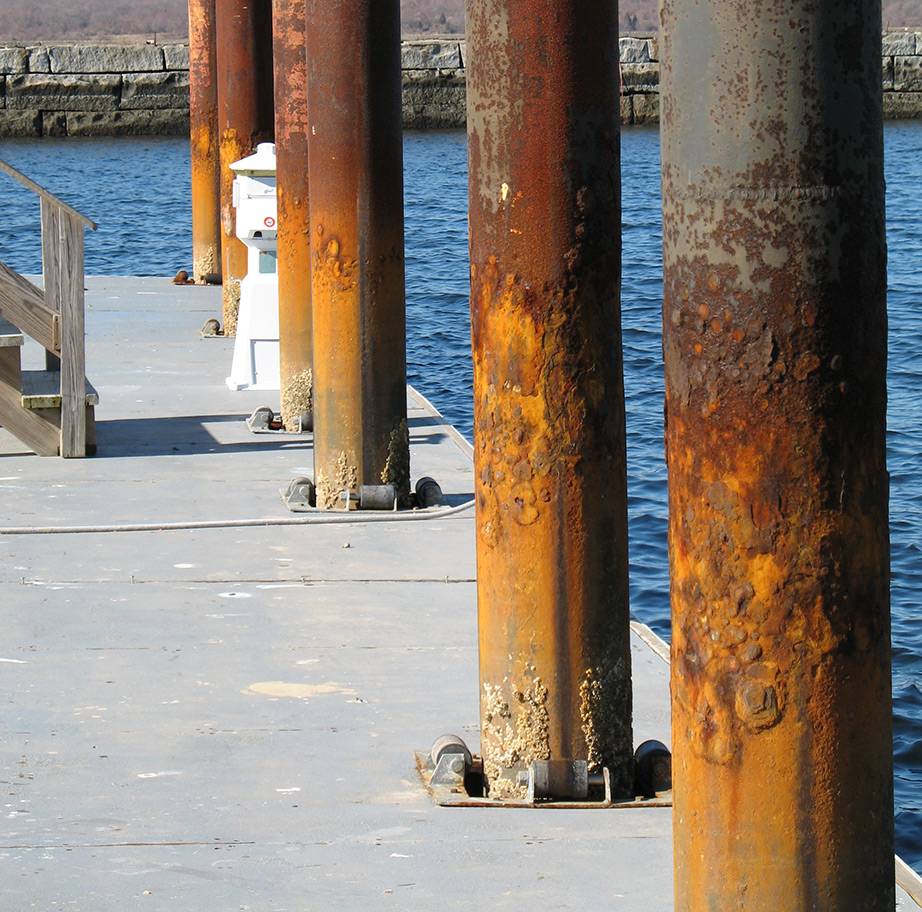Composite vs. Steel
What’s stronger than steel?
Even steel eventually buckles: Which is stronger, steel pilings or composite pilings? A strand of fiberglass is actually stronger than a strand of steel on an equal weight basis. But by some measures they are equally strong.
No matter how you measure it, strength is only one predictor of a material’s ability to resist force. While composite and steel pilings will both bend under a heavy load, at some point the steel piling will kink and stop bending. When the load is removed, the kink remains. Fiberglass, on the other hand, continues to bend, and then recovers its original shape. This increased level of flexibility means fiberglass composite pilings could be considered stronger relative to the bending and the deformation of steel pilings. Composite pilings withstand heavy loads and maintain their shape under pressure.

Rust, the facts: Even more damaging to waterfront development dependent on steel, warns Pearson, is the “pervasive problem of galvanic corrosion and rusting.” Left untreated, “rust can eat away at pilings until the point where they will fall right over.” Corrosion protection systems are available to help prevent damage in the splash zone, including electrodes, petrolatum tapes, wax tapes, fiberglass jackets and epoxy grouts. But these systems significantly add to the cost and effort to maintain docks, marinas and piers.
As Pearson explains, “steel pilings without galvanic protection in areas where galvanic activity is present are very susceptible to galvanic corrosion. Owners of steel pilings spend thousands of dollars per year to help extend the life of their pilings. These costs add up quickly.” Lighter, more flexible and more durable against the elements, composite pilings are easier to transport, repair and maintain than steel pilings and never rust, rot or corrode.
See composite pilings in action!
